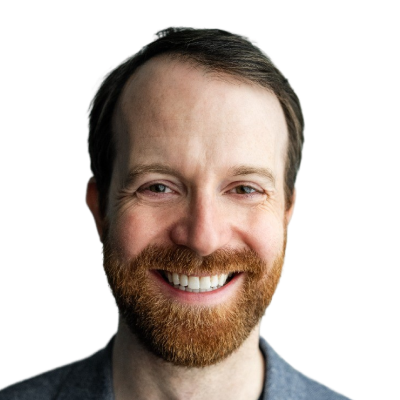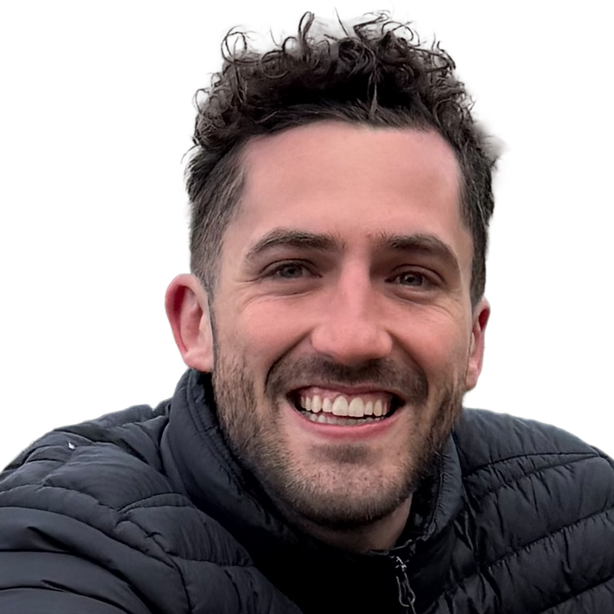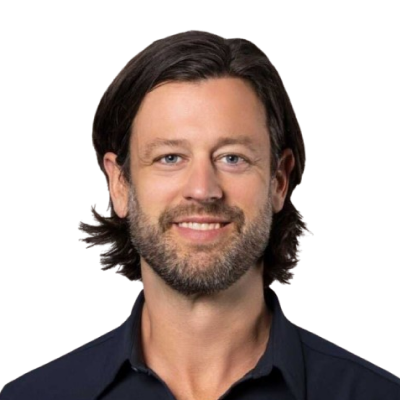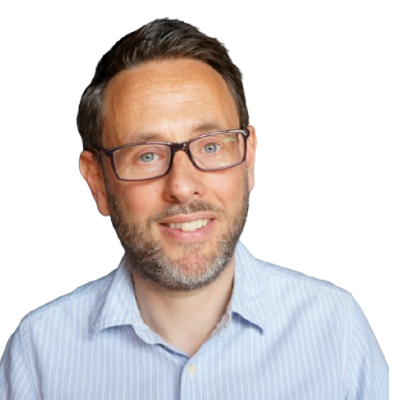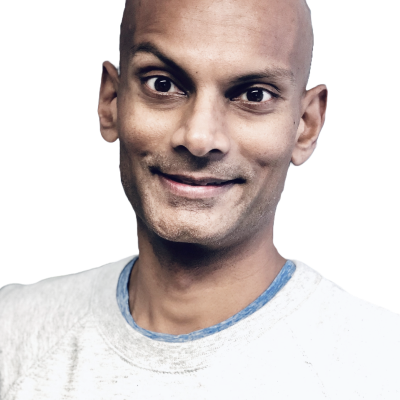

Faris Aziz
Lead Product Manager at Bloom & Wild
Bridging the Gap Between the Online and Offline Customer Experience
We get so obsessed with building the perfect digital experience that we sometimes forget that for many products, even if they rely on digital, the magic for the customer happens offline. We’ve been keen to speak to a company that successfully bridges the gap between the offline and online CX and we finally found the perfect product person. Faris Aziz is the Lead Product Manager at Bloom and Wild.
Even if you haven’t ordered flowers from them, you probably remember that they pioneered the letterbox flower delivery back in 2013. Eight years later and a few months after their £75M Series D funding round, Faris shared with us:
- How they bridge the gap between online and offline;
- How they create demand and retain customers;
- Insightful findings from recent growth experiments they’ve done internally;
- His advice on how to grow in product management while growing the product
Check out our recent episodes:
Transcript
Please note this transcript is automated
Desi Velikova 0:00 Hi everyone, we get so obsessed with building the perfect digital experience that we sometimes forget that for many companies, the real magic happens offline. I’ve been keen to speak to a company that successfully bridges the gap between offline and online. And I think I finally found the perfect product person. Faris Aziz is the Lead Product Manager at Bloom & Wild. Even if you haven’t order flowers from them, you probably remember that they pioneered the letterbox flower delivery back in 2013. Eight years later, and a few months after their series D funding round here is what Faris shared about the way they approach growthh at Bloom & Wild.
Desi Velikova 0:58 Hi, Faris. Welcome to The Product Show.
Faris Aziz 1:00 Hi Desi, so good to speak to you.
Desi Velikova 1:02 It’s a pleasure to finally speak with you. I’ve been keen to speak to someone like you who comes from a company who is looking after not only the digital experience, but also the offline experience. So I’m really excited about our conversation. Tell me a little bit more about your background. And how did you become lead Product Manager at Bloom & Wild?
Faris Aziz 1:26 Yeah, awesome. So I started years ago as a consultant and wanted to move away from kind of advising companies and actually being in house and having a proper impact. I moved from there to Train Line where I was first introduced to products. Before Train Line, I didn’t even know product management was a thing. But some amazing product managers at train line and learn a lot from from some of those guys that moved from there to Trussle, an online mortgage broker very small startup at the time. And like learn a huge amount about product management real tangible day to day kind of getting more responsibility than you should do in a small startup. And from there moved to Depop, really, really fast-paced, really exciting business that’s that was growing rapidly, I think this T shirt is actually from them. And from default moves to bloomer world, which is, again, like as much as much love to step up, I think by the community and the by the users and by the customers. And I think that’s what’s so cool about Bloom & Wild. And also deep up is just how much customer love there is unbelievable. Wild. Yeah. And like you said, kind of bridging the gap between offline and online, a physical product, whereas deep platform, Trussell was also a platform. Train Line, again, like more of a platform where everyone has a physical product, which is brings its own challenges.
Desi Velikova 2:50 And can you tell us a little bit more about your day-to-day? What exactly are you in charge of as the Lead Product Manager at Bloom & Wild?
Faris Aziz 2:58 Yeah, so when I first joined, I was the product manager for the growth team, we kind of rebranded ourselves, as we’ve grown our scope with within the product team has kind of been broken up a little bit more. So I’m now overseeing acquisition and discovery, which is broadly the same kind of product area from awareness all the way through that first purchase. So I’ll work very closely with the marketing teams across paid acquisition, as well as SEO, work super closely with the tech team to think about performance and site speed, and then the core browse and explore experience as well. More recently, we’ve hired a pm for the apps and I’ll be supporting and managing them as well.
Desi Velikova 3:37 So in the digital product, design community, we are kind of obsessed with building those effective, sticky products. But for Bloom & Wild, as you mentioned, and also for many other companies, of course, the digital experience is only part of the whole picture. The real product is the flowers, the magic happens offline. So can you tell us a little bit more about how you’ve structured the teams and also your processes to make sure that you’re building an effective customer feedback loop? And also to make sure that this feedback doesn’t collect dust somewhere?
Faris Aziz 4:17 Yeah, we have a really good point. I think, in previous organizations, it’s been much more tech-driven and tech-led, and products-driven. So Depop obviously, there’s a big community, but within the product tech teams, you can kind of come up with the ideas in isolation, there’s not another broader team to kind of consult whereas at Bloom & Wild, we’ve got the range team, the merchandising teams, we’ve got, the brand teams all have a different angle and a different take on what they think is important and also a different kind of input from users. So a huge amount of feedback we get from users every single day, from all different areas and everyone within the business, I think What’s really key to success and listening to users is that everyone cares about that. It’s the number one thing that we talk about this just a relentless number of things being shared insights and opinion from customers and different views. So yeah, like, kind of preventing stuff. And gathering dust is a really, really interesting challenge. Because there’s so much input. I think, from the product teams perspective, it’s all about prioritization and thinking about what, what the most important thing is for the user. And that’s obviously, multiple factors. But yeah, that’s kind of how we deal with it.
Desi Velikova 5:35 Right. And as a product manager, I can imagine that you constantly have an abundance of product improvement opportunities in front of you, many of which sounds amazing on paper. And how do you assess those opportunities? How do we prioritize them, and decide what to focus on? And the reason I’m saying that is because from my recent conversation, prioritization is obviously one of the biggest challenge for many product people. There is so much we could do. And we are always limited when it comes to time and resources. So do you have like, you know, your own system of framework or process that you fall to prioritize those opportunities?
Faris Aziz 6:17 I think there are loads and loads of processes and frameworks. And I’ve, I’ve used a lot throughout my career, but
Desi Velikova 6:23 The ones that worked for you.
Faris Aziz 6:25 Yeah, well, there’s the RISE methodology, I always really, really, like using, I think I usually use that at the beginning of a product discovery process at a high level to identify themes. But broadly speaking, when I get into the detail, it’s a combination of business and user impact. That’s often assessed across different stakeholders. It’s gonna be different opinions across different parts of the business about what is the most impactful for the business, and what is the most most impactful for users. So taking those those kind of inputs, combining it with how much resource we have within the team, you can then develop a plan. And as I think what’s interesting as well, within the product is actually after like a year or so, working for a particular business, I find generally, that’s when you start to really feel like you understand how much effort something is going to take to build how much impact you think this thing could have. And you start to have a bit of an instinct combined with that process, is when I start to feel like I’m really firing all cylinders as the product manager, and understanding which things are most important. The instinct comes from, you know, previous tests, what’s gone, well, what hasn’t gone so well. Having a bit of having more context of the business at a broader level, you’ve got time now you’ve been established to kind of understand where the business direction is going strategically. And sometimes things are prioritized for the future as opposed to the present. Yeah,
Desi Velikova 7:54 So let’s talk a little bit more about the challenges for you as a product and from where I sit as an outsider, and you can correct me if I’m wrong, I’m just literally shooting in the dark. But my assumption is that the biggest challenge for you is repeat orders and retention, you have the multi subscription option on your website, which is great. But the nature of buying flowers, especially online is a very special occasions. So can you tell us a little bit more about the efforts to create demand? What do you do to bring people back to turn them into regular customers? For example, I noticed something on your homepage, where you prompt people to save three dates, and you’re gonna credit five pounds to their account. Can you share some other interesting examples that worked really well in terms of campaigns and features?
Faris Aziz 8:51 Yeah, the retention team. Yeah, I’ve done loads of stuff to drive. That behavior that you described, we identified not myself a completely a different, another pm. So I’m not going to take credit for this, but identified high value actions, a series of actions that we identified through data that indicated an increased propensity to purchase into repeat things such as liking items, favoriting occasions, as you described. And then from that insight, developed a strategy to try and drive those actions. Another big one is has been downloading the app, which is now super interesting. Now I’m kind of looking after the app a little bit more understanding what types of users are more likely to download the app. Not everyone knows pretty wild has an app. Sometimes surprising. It’s not. It’s not that common in the Yeah, yeah. But we have we actually, surprisingly have a huge number of users a huge number of loyal engaged users, and it drives and lots of repeat orders as well. So kind of thinking about those high value actions on the web translating that into getting people to also download the app and how that experience can be replicated on the app, I think there’s a huge opportunity for us in the future to really think about repeat purchases on our app.
Desi Velikova 10:15 Interesting. Can you share the findings from a recent growth experiment that was done internally, something like an interesting anecdote from the Bloom & Wild kitchen?
Faris Aziz 10:25 Yeah, I think one of the most interesting experiments I’ve run recently, we’ve run within the team has been, it sounds super, super simple. So it was a, it was really related to the information architecture. And the way that we group products. And as I mentioned, there’s a huge number of inputs from across the business that care about this kind of stuff. And obviously, everyone cares about how we structure the products. But in particular, the merchandising and range team is really how they communicate those individual products to our users. So the navigation is where we surface that primary navigation on web used to before the experiment. The first item was often letterbox flowers is what we’re known for is the majority of our sales, it’s our core value proposition. But actually going forward, that’s not necessarily going to be the case, we’re expanding into different areas, we want to sell different types of products to different types of users. We started to think about what that navigation might have to look like to cater for that future range and that future of business. We did a very simple card sorting exercise with users to understand. Here’s a bunch of products, here’s what we sell, like is actually does our navigation support, how you see the world? How do you see blooming world. So group these things are do you do users just put them in letterbox flowers, if they do great, that probably means that navigation is like fit for purpose it was working. But what we actually found was that people found the delivery methods super important. So whether the product came through the letterbox or whether it arrived at their door. So our larger products that can fit into less box that we sell, they, the users definitely wanted that to be kind of separate in a separate grouping or structure. And equally flowers versus plants, or flowers versus other things was a very common grouping that the users that we talked to also did. So what we did was simply test our old navigation versus new navigation that more clearly focused on delivery and also product type. And we found the new navigation, which was very simply flowers and plants as the first item through the letterbox as the second and to the door as the third, followed by our normal occasions. And monthly flowers, we found a huge impact on conversion, conversion increased by several percentage points, as well as actually skew mix of other products. So we found monthly flowers was impacted really positively, as you mentioned, subscriptions and bundles and the other products that we sell. So having a clearer, clearer navigation tailor to your users, much more customer centric meant that they’re actually more easily able to find those other products.
Desi Velikova 13:00 Yeah, absolutely. Very interesting. And that kind of reminds me of a way we approach our workshops here. We always start discovering the new journeys with identifying the red routes for the user? What are the most critical actions that will want the user to take? So that is a really great discovery. And how about a small UX tweak product improvement and something really little that you didn’t expect to have huge impact on the product? But it turned out to be a big win. Did you ever have long such a magical, magical, magical moment for something really small? That turned out to be a bee queen?
Faris Aziz 13:40 Yes, I guess this is sort of small, I think in the way that a user with
Desi Velikova 13:45 It’s never small, right. It comes from years of experience.
Faris Aziz 13:51 So what was a really cool change to be made, this is quite a while ago, was switching the way that we surfaced products on our production list pages. So classically on E comm, it would be a grid view products, just in grid lists, and you’d be able to scroll down. However, a year ago, we actually had a horizontal carousel that you’d swipe across. During very early use interviews with some customers, people were finding and they were saying and nobody we find to use interviews is actually are very likely to be okay with certain friction, that often like much more open to it because in an interview that I yeah, I’m not too bothered with doing that thing. But actually, what we found was interviewing them was the flicking horizontally through these products. They’re actually getting mentally tired during the interview, which for me was a big alarm bell. If they’re surfacing that kind of issue in an interview is much more likely to even be amplified. When you’ve got a few minutes. You just want to quickly look at the site and quickly find something to buy. You’re in a rush you’re on your phone, you’re not in an interview situation where you’ve got loads of time. And they were saying that basically they were getting tired from looking through all these products. And by the end of the kind of swiping process, they weren’t sure exactly what they saw at the beginning of the process. So from that, really simply, we thought, why don’t we try thinking about a grid view, our range has expanded since we had this horizontal kind of browsing experience. So we change it to be vertically scrolling on a grid view. And again, like a huge amount of conversion rate. sounds quite simple. It sounds quite small, obviously, yeah, took a lot of kind of effort to get there a bit of surfacing that insight. But yeah, really, really interesting change that dramatically changed the way our users actually interacted with the site.
Desi Velikova 15:38 And from what your experience, what do you think is the secret to sustainable product growth?
Faris Aziz 15:45 I think I’m sure you’ve probably heard this by many people, but it’s all about stay close to your customers, understanding their needs. And it’s really, as I’ve kind of grown in my career, as a product manager, you kind of realize a way of taking what a customer is saying and extrapolating that into what that actually means for opportunity, or the next thing to do or the next area of opportunity to explore more deeply. So what I’ve found from Blue World in particular, is getting really close to the user, right, a beginning of the product discovery process. So you’ve identified an objective or a thing you want to achieve within the product team, within the teams more broadly, within your squads, speak to a bunch of users to understand that much more deeply and ritually, and then from there, you can then confidently dive into less like start sketching designs, this is what we think will really nail that problem. And we’ve identified by speaking to people, so it’s that speaking to users phase, and getting that deep, rich user insight that mitigates risk for you going down the rabbit hole, and for you to think that this particular solution is the right thing to do. I think that is really a simple, and it’s quite simple. Really. I think that’s the key thing.
Desi Velikova 17:05 Yeah, it’s simple. But it’s also a good reminder, because sometimes we get so busy with all the different projects in the work world that we forget to speak to customers, or at least we don’t speak to them as often as we should. And can you tell me, how do you balance? What you just describe the use of research and the customer feedback part of the process with using your instincts as a product manager? And how do you decide it’s time to innovate and bring something to the market, that it’s not an apparent customer need?
Faris Aziz 17:39 I think that’s a really good point. And I think generally speaking, if it’s something that I have, like, a little insight on, I think this thing could work. It’s, I tend to only go with my gut, if it’s small. If it’s small, and doesn’t take a huge amount of effort, it’s not going to take an engineer, you know, several weeks to do. Whereas if it’s something that it’s like larger, requires more effort, might require more technical changes to be made, then I will tend to lean on user research and make sure that we are doing that kind of groundwork to mitigate the resources that we use. So it’s so important, obviously, as a, as a business, to make sure that everything you do is kind of profitable, makes sense. From a cost perspective, you’re wasting too much time on stuff, but with the scope of being able to experiment and explore. So I tend to try and mitigate the risk of something larger with user research and make sure that’s really where we start. Whereas the smaller things, I might have an idea or the team comes up with a really cool idea. As long as that’s kind of smallish, then maybe we don’t need to do a huge amount of research. Right?
Desi Velikova 18:46 And if you’re starting in product management now, how would you spend the first few months of your career? Where would you invest your time?
Faris Aziz 18:55 That’s a really good, really good question. I think, what I enjoyed, and I guess, I think I would probably advise someone starting out would be to, perhaps try in, perhaps start off in a quite an established company that’s got a solid kind of product team, and not be totally, you know, not not be the first product hire to be your first product role. Or even the second maybe, you know, when I first started off a train line, there was a really strong team there. And I could ask them questions, I could make mistakes, they could tell me where I was going wrong. They could coach and guide me. By daily. It’s great having mentors, but having someone actually their daily, you could observe that the way they work. Having someone to learn from I think is the most important thing for your first product. Ryan for your first few months.
Desi Velikova 19:46 Yeah, absolutely. And probably find, I guess, the right environment to make mistakes, break things and learn on the way so you’re not punished early on.
Faris Aziz 19:56 Yeah. Now that’s a really good point. I think culture I guess Yeah, having that psychological safety is so important. And during the interview process, if you’re looking for your first product role to really interrogate the person that you’re talking to, about the culture of the company, is it the kind of place that you think you could learn within? Because learning like you, you will make mistakes, because you’re learning? That’s just what’s gonna happen. So are they open to that? Are they okay with that? Do they have the kind of culture that fosters that? It’s positive? It’s massively positive. And I think organizations that I’ve really enjoyed working for have had that at the core. I blame a lot of certainly one of those. So I think it’s super important, probably even more important at the beginning of your career.
Desi Velikova 20:38 Right? Absolutely. And before I let you go, Faris, tell me the product metrics you start your day with, what are you obsessed with at the moment?
Faris Aziz 20:50 I do quite love and maybe it’s a bit of a vanity metric pie to really love revenue per user. So understanding exactly how much our users are bringing to the business.
Desi Velikova 21:03 Yeah, I believe your management would love to hear that. That’s the main thing we all should care for. Right? Yeah. Okay. Thank you so much for your time. Where can people find you online?
Faris Aziz 21:17 LinkedIn is probably the best place to look if you want to connect? Faris Aziz, just type me, I should be there.

